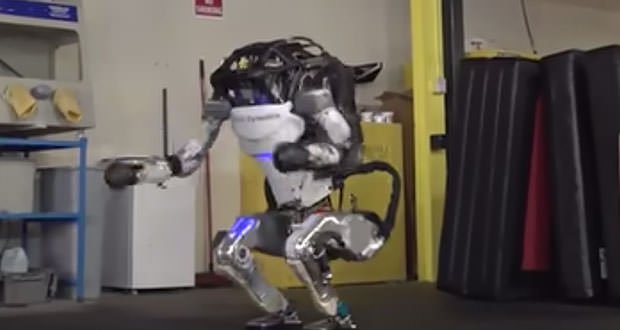Atlas, the Boston Dynamics robot now also does gymnastics
Boston Dynamics shows how his Atlas robot is now able to use all parts of his body in an increasingly harmonious way.
Atlas uses his whole body, that is his legs, arms and torso, to perform dynamic maneuvers that resemble real gymnastic exercises. The goal was achieved by developing an algorithm that segments a complex movement into smaller flexible movements. The algorithm uses a predictive model that allows you to mix each action with the next.
Boston Dynamics claims that thanks to the new approach it achieves a success rate in performance of around 80%. Presumably each of the jumps performed by the robot implies a forward momentum: Atlas would seem to be able to control this type of inertia, at least to judge its movements in the video. Surprisingly, Atlas is able to roll gracefully along the back without any of its machinery bending.
Boston Dynamics is one of the best-known US robotics companies, focusing on implementing and training AI in their robots to give them a purpose; the company is part of the Japanese technology conglomerate SoftBank which last year bought it from Google for an undisclosed sum.
His best-known creation, Atlas, is one of the most advanced humanoid robots in the world. It resembles the appearance of a man: it is 175 centimeters tall, weighs 82 kilos and moves thanks to a sophisticated electric and hydraulic system.
Atlas has acquired the ability to jump over obstacles, perform backflips and turn around quickly and smoothly. He also knows how to open doors, collect and transport heavy loads and stay in perfect balance even if forced to walk on uneven ground; furthermore, it stands out for its ability to withstand shocks and stand up without difficulty in the event of a fall. Interesting skills for a humanoid in continuous growth thanks to artificial intelligence.
It is not the only novelty at Boston Dynamics, because it has simultaneously released a video of Spot, a more agile robot capable of moving even on the most uneven terrain. Spot is able to avoid obstacles at 360 degrees in autonomy or with remote control.
Companies can customize Spot by adding specialized sensors, using their software and implementing other types of equipment. The first customers are already testing Spot, as mass production has already started. They use it to monitor construction sites, to carry out remote inspections in gas, oil and electricity plants, all while guaranteeing workers safety at work.

